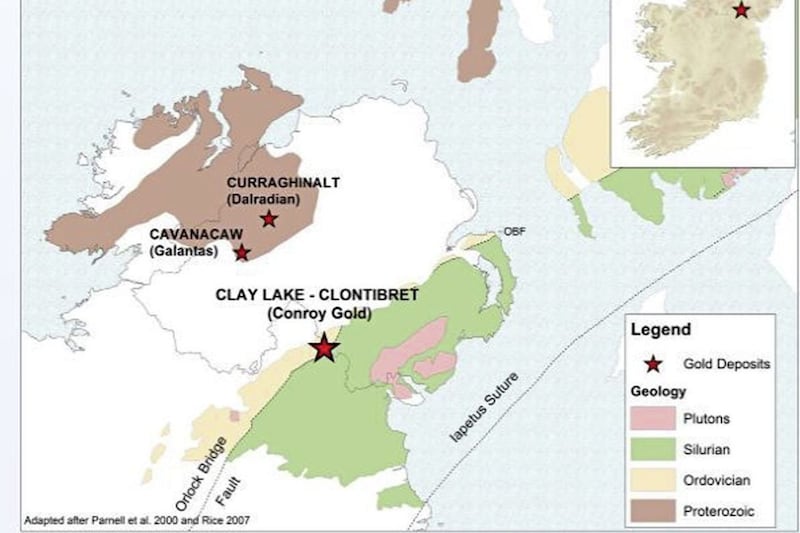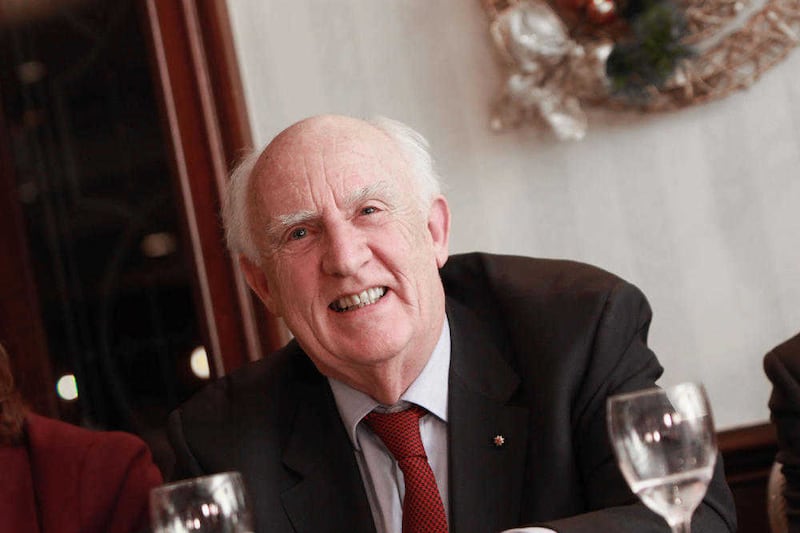IT HAS been a long road for Professor Richard Conroy to find his pot of gold at the end of the rainbow.
An emeritus professor of physiology at the Royal College of Surgeons and former Fianna Fáil senator, he founded Conroy Gold and Natural Resources plc in the late 1990s in the hopes of hitting it big gold mining in Ireland.
Over the last two decades the company has successfully discovered the presence of gold in four of its targets – Slieve Glah in Cavan, Clay Lake in Armagh, and Glenish and Contribret in Monaghan.
Conroy Gold even has licence to a 30-mile stretch of land which, in 2013, it claimed has the potential to yield 15 to 20 million ounces of gold.
This would make the gold worth billions of pounds and the site one of the largest deposits in Europe. However, there is just one problem – actually getting at the pay dirt.
“It is a very long process and there are several stages you have to go through before confirming the viability of the targets,” Prof Conroy said.
“The problem is, once samples are collected they have to be sent away to be tested and the presence of gold has to be found not only in the soil but in the bedrock itself also – a process which is indeed long and arduous.”
The company has poured more than £12 million into the sites over the years, metallurgical testing, sample drilling and digging, and has attracted millions in investment from shareholders but so far has yet to set eyes on a single ounce of gold.
For years the company has been trapped in a cycle of operating at a loss while at the same time raising capital for further exploration by share placing and debt conversion.
In the year ending May 2013 the company lost €423,979 (£354,473) after tax, followed by €380,305 (£317,970) in 2014 and €315,314 (£264,903) last year. But during this time it raised even more than it has lost in order to fund explorations.
Every two or three years shareholders’ hearts skip a beat whenever Prof Conroy announces that the firm has discovered even more enormous deposits of the precious metal, with even bigger prospects for returning huge amounts of money.
However, the excitement soon dies down when one constant is realised: prospects don’t mean much without following through on the actual prospecting.
Problems lie, Prof Conroy said, in raising the money to commence the costly drilling and extraction process. Starting mining at just one of the sites would cost at least £50m.
“We are currently looking for someone to come on board in order to raise the funds necessary to develop our mine in Clontibret,” he said.
As recently as March this year Prof Conroy and his colleagues travelled to Toronto for the annual Prospectors and Developers Association of Canada in the hope of gaining a much-needed partner in the venture.
“We have an economically viable mine with short payback and a number of targets with huge potential across the licence area,” he said.
Over the years gold prices have fluctuated – peaking in 2011 at more than £14,000 per ounce and now sitting at a just over £900 per ounce. But due to the plummeting value of the pound following the EU referendum vote, gold had seen an overnight surge in value as people seek comfort in the safe-haven asset.
Speaking with optimism, Prof Conroy said he believes Ireland is becoming a “significant mining province”.
“Previously in Ireland people didn’t know what they had. The gold was dissolved into the rocks and so what people thought was waste rock was just thrown away. But now we see things are changing,” he said.
Indeed, in recent years gold mining in Ireland has become tenable, with Canadian company Galantas Gold establishing an active open mine in Cavanacaw near Omagh.
Exploration company Dalradian Resources also has a site in Curraghinhalt in Omagh which it is testing, so far with positive results.
Prof Conroy said he hopes to start work on the company’s first active gold mine at its site in Clontribret within the next decade. But at 80 years old, the chance of the professor reaping the rewards may have come too late.








